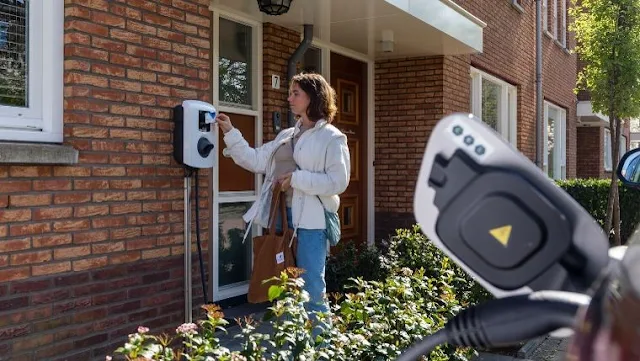Everything About The Different Ways of Loading
When you charge your electric car at a public charging station or fast charging station, you need a charging card. How do you get such a (digital) pass? And where can you find the charging stations that you can use? We help you on your way.
When you connect the car to a charging station with a charging cable,
the battery pack in the car is charged. The speed at which the car is charged
can vary considerably and depends on many variables. You can, however, make a
distinction between 'ordinary charging' at a charging station or 'fast
charging' at a fast charging station.
Just Load
As far as charging stations are
concerned, you can distinguish between 'regular' charging stations and fast
chargers. Let's start with the regular charging stations. Here you can choose
between private charging stations and public charging stations. If you have
your own (private) charging station, you do not need a subscription. This is
usually necessary for a public charging station. Such a subscription includes a
charging card and with that card, you identify yourself at a charging station.
In this way, the supplier knows who has purchased the electricity and, above
all, to whom this must be invoiced. With some providers, it is possible to use
your smartphone instead of a physical charge card, similar to contactless
payment with your mobile phone.
These poles charge at 'normal' speed. You preferably charge when you
don't need the car, for example at home in the evening and at night or at the
office during the day. Fully charging a battery takes about 5 to 10 hours,
depending on the type of pole and the car.
Please note: if your car's battery is full again and you then leave
your car parked for a long time at a public charging station, you run the risk
of being fined for 'charging sticking'.
You can also charge without a charging station, simply via the socket.
That is another story and there are both advantages and disadvantages to it.
Fast
Charging
When you're on the road and your battery
is about to run out, you don't want to wait for 6 to 10 hours before your battery
is full again. In that case, you can use a fast charging station. These are
usually located along busy roads, often near the large petrol stations along
the highway. You also need a charge card for fast charging stations.
These fast charging stations can charge your battery much faster, in
many cases the battery is charged to 80 percent after 20 to 40 minutes. Fully
charging an electric car at a fast charging station is not convenient, as the
charging speed decreases quickly above 80 percent battery charge.
Think of it like a glass of water that you fill under the tap. When
you open the tap fully, the water will splash over the edge before the glass is
completely filled. You can't fully charge a battery with the highest charging
speed either, as charging becomes slower as the battery becomes fuller. When
you make a long journey, for example on vacation, it is faster to charge more
often for a short time than to make fewer stops but to always fully charge the
car.
Fast charging stations are more complex and therefore also a lot more
expensive than regular charging stations. This is also reflected in the rate
that suppliers charge per kilowatt. Fast charging is therefore particularly
interesting for those moments when charging at a normal charging station is not
sufficient. Those who can charge their car at home and at the office will
rarely if ever, need a fast charging station for daily use.
Charge
Card
There are many providers of charge cards. Part of it provides access to all public charging stations in the Netherlands, including the yocharge charging card. In addition, you can also use the yocharge charge card at most fast chargers and at many charging points throughout Europe.
Charging
Station For Home
At most public charging stations you
usually pay a slightly higher rate per kWh than your own electricity supplier
charges you. After all, the costs for the construction and maintenance of the
charging station must also be paid. If you want to charge at your own rate, you
will have to invest in a charging station at home. You must then have the
option to park your car on your own property. An additional advantage is that
you always have a charging station available. A public charging point can be
used by anyone, so you sometimes have to wait or move to another charging
point. Please note: now that electricity rates are swinging out of control, it
is advisable to compare your own electricity rate with the providers of
different charge cards. It may just be that today you pay more per kWh at home
than at the public charging station.
Apply For
A Charging Station At The Municipality
If it is not possible to realize a
charging point on your own site, you can submit an application for a public
charging point to the municipality. It depends on the municipality, and the
rules that apply there, whether this is possible. If so, there will also be a
traffic sign at the charging station in the parking lot. This sign indicates
that the parking space is only intended for electric cars. Other people with an
electric car can also charge their car here. In exceptional cases, it is
possible that the municipality will reserve a parking space adjacent to your
own site for you and that you install EV charging station
there yourself. Laying cables from a home over a public sidewalk or road is
prohibited in almost all municipalities.











0 Comments